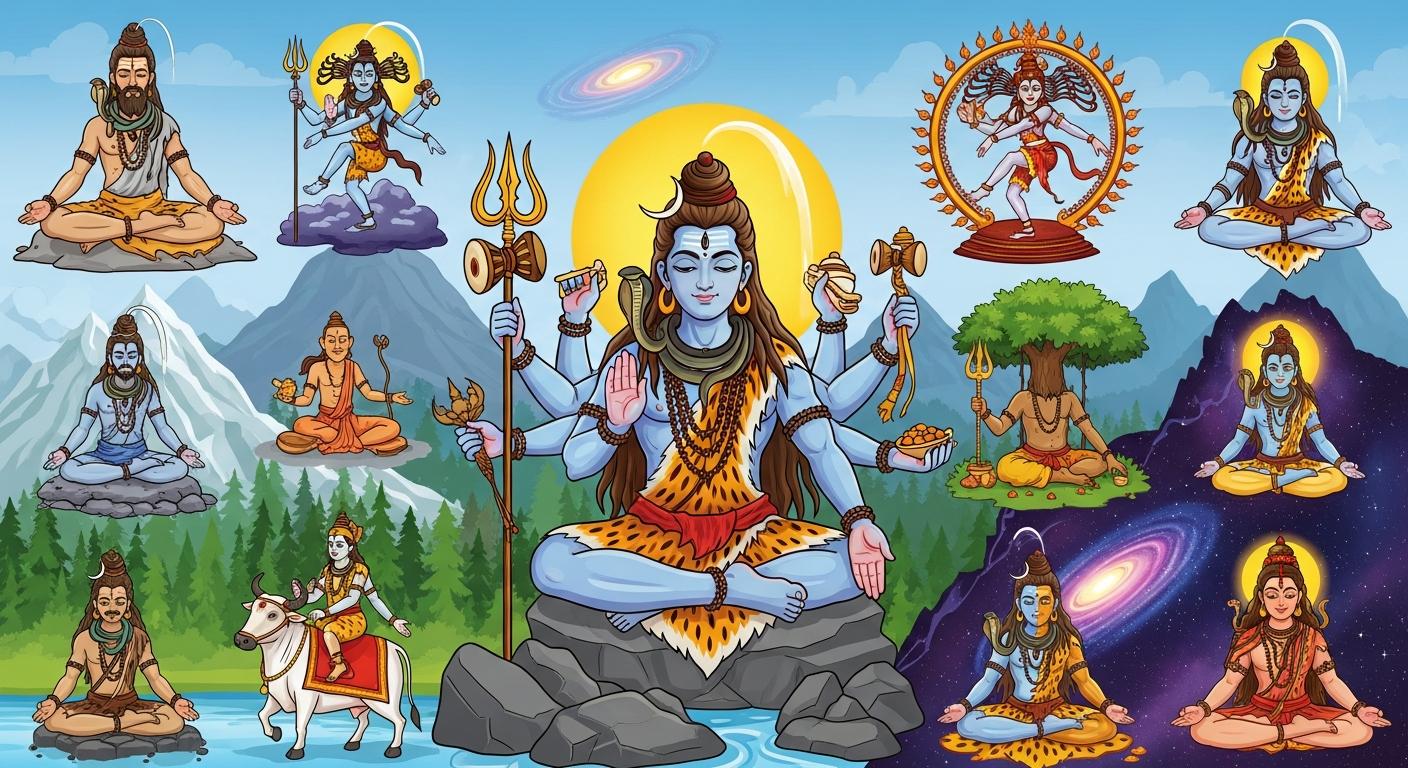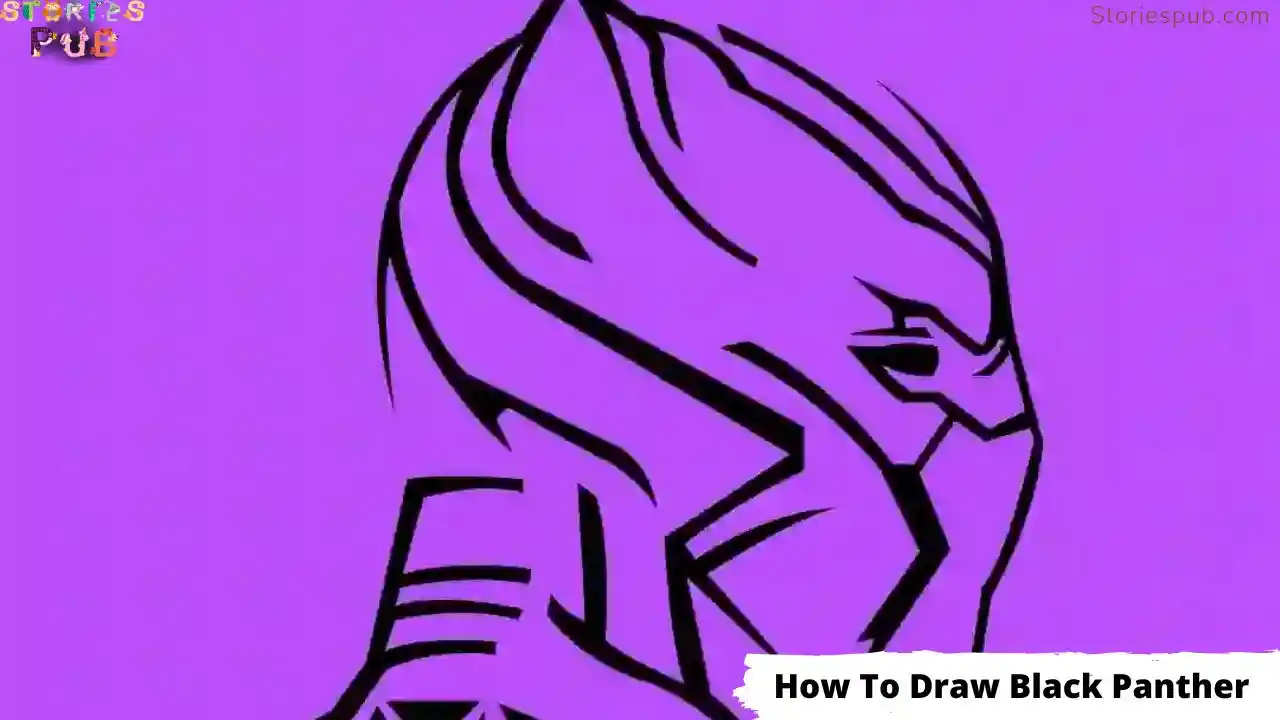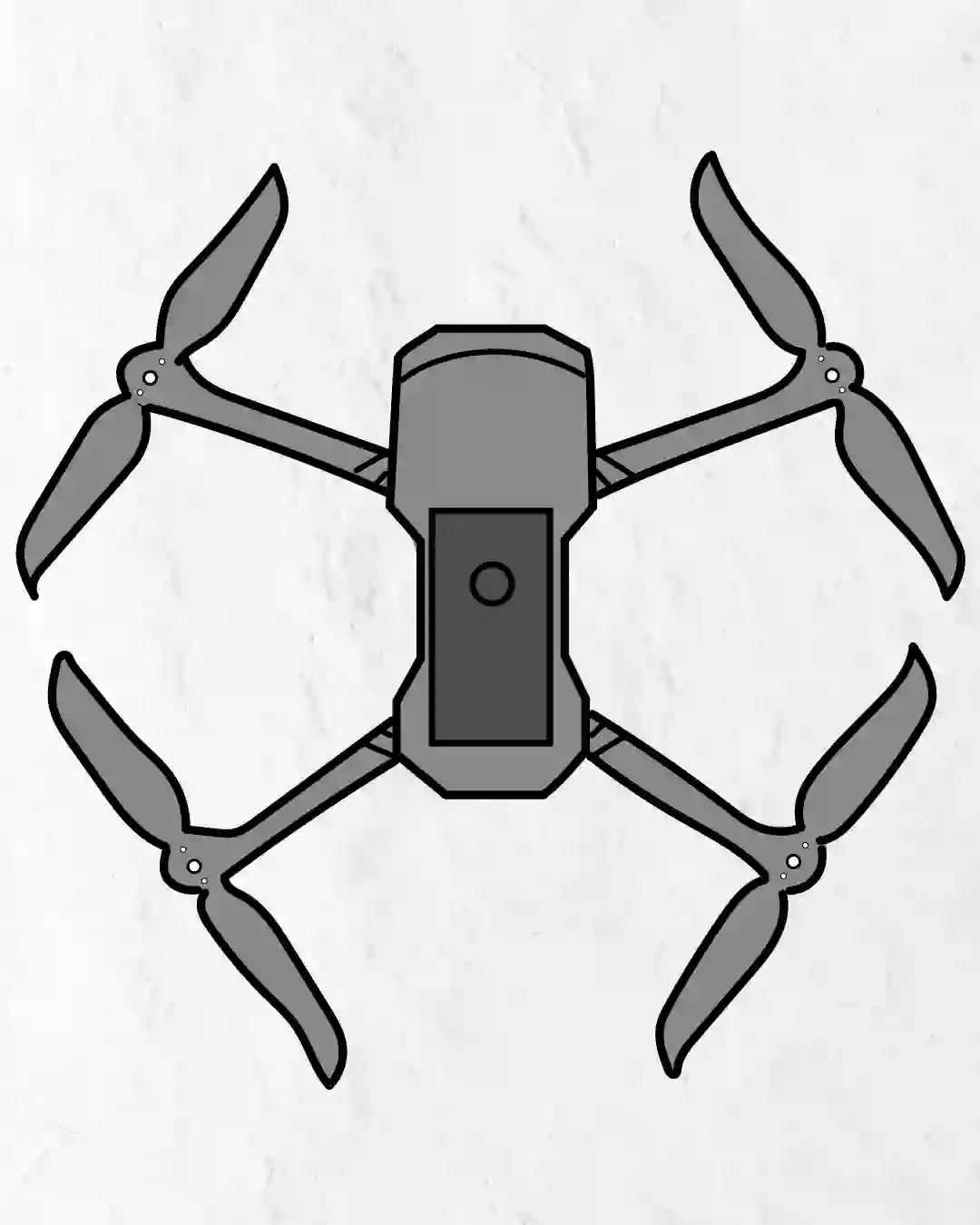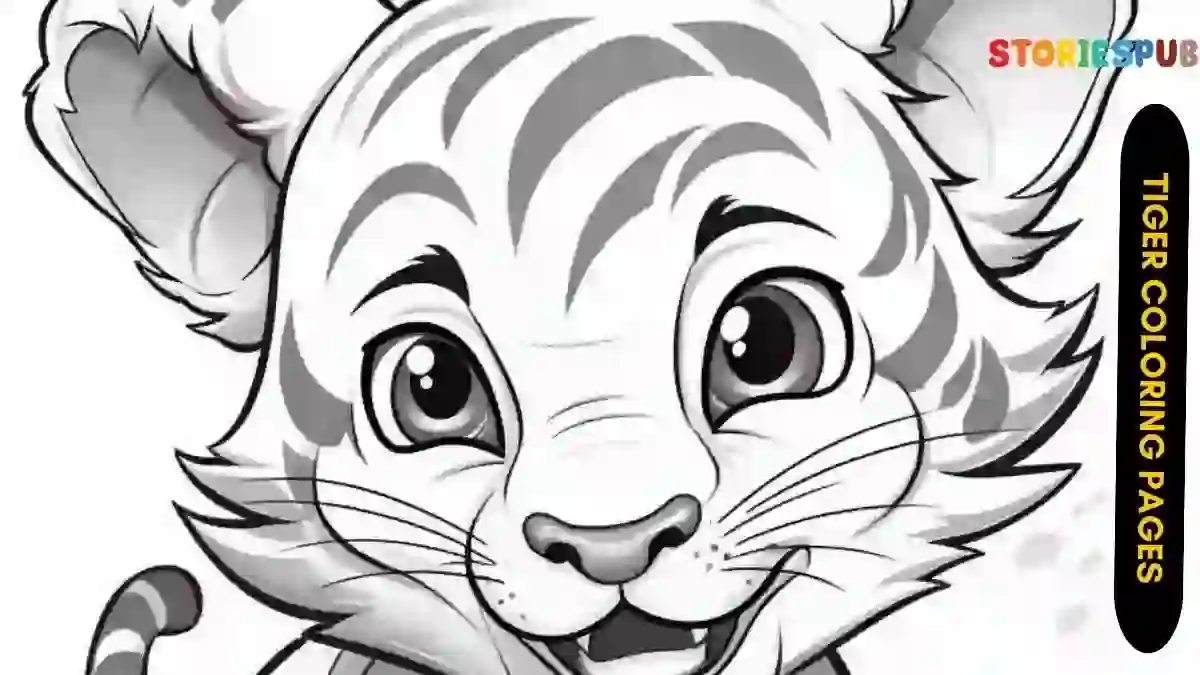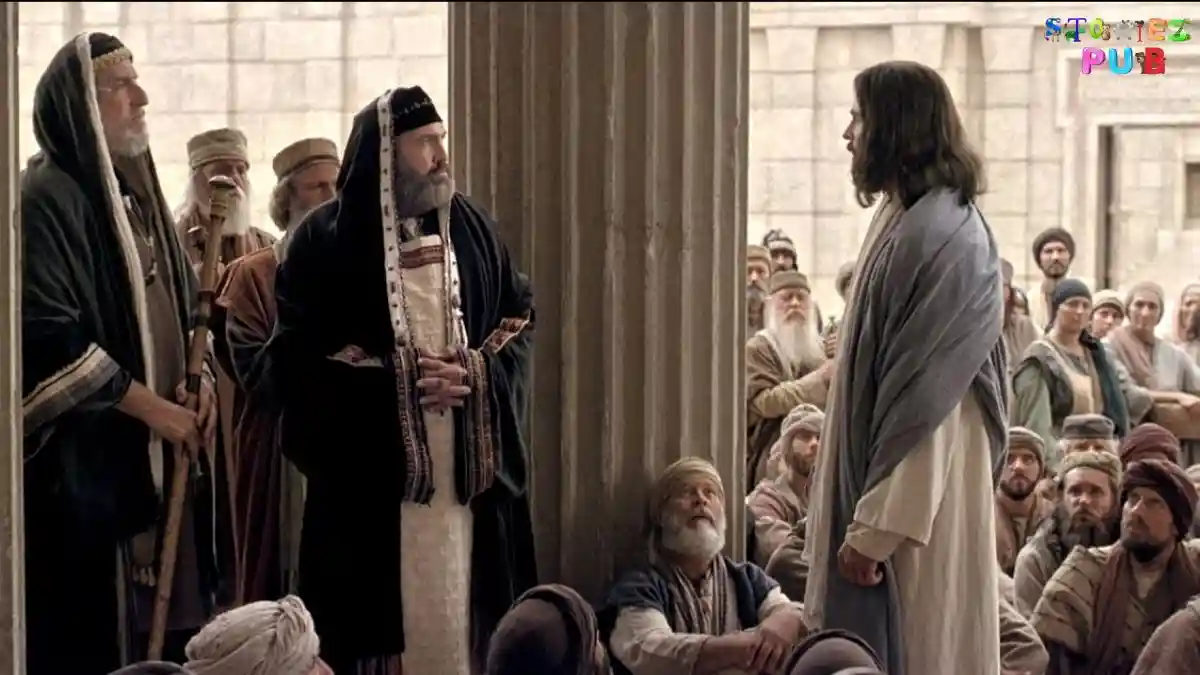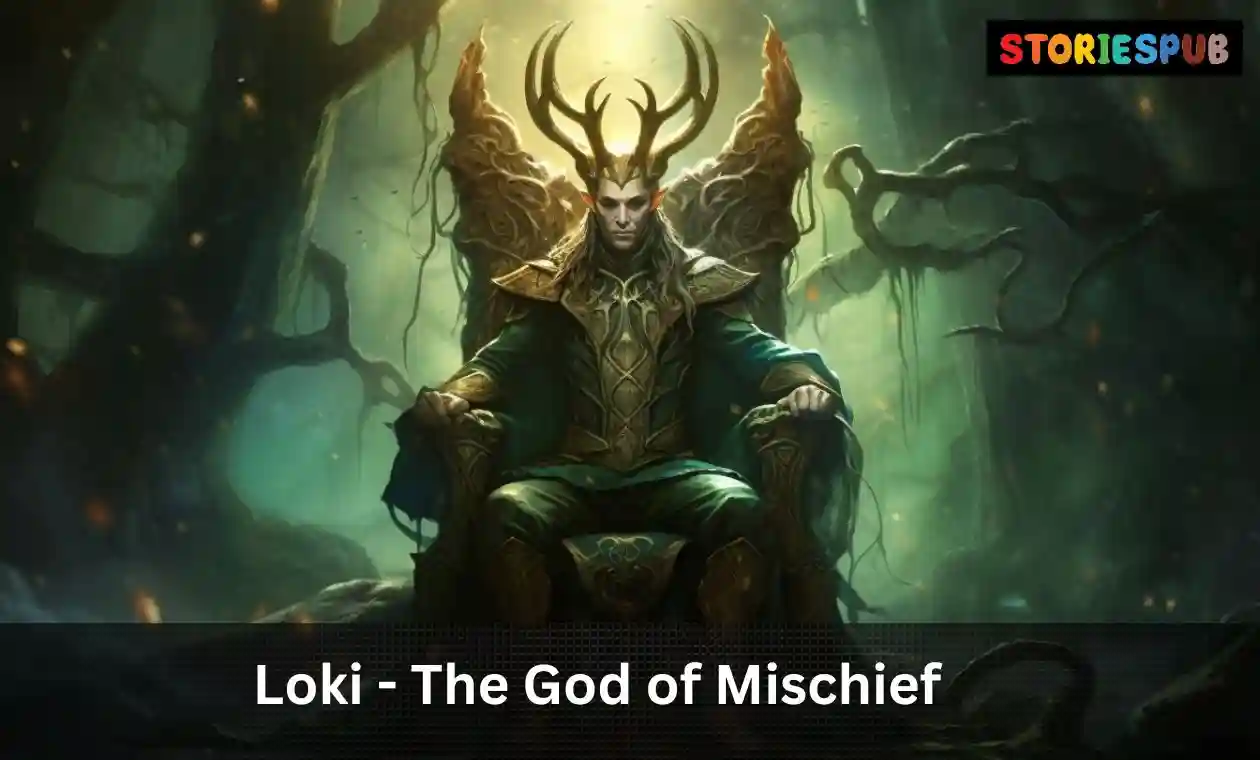Summarize this Article with:
Erlang Shen: The Enigmatic Deity of Chinese Mythology
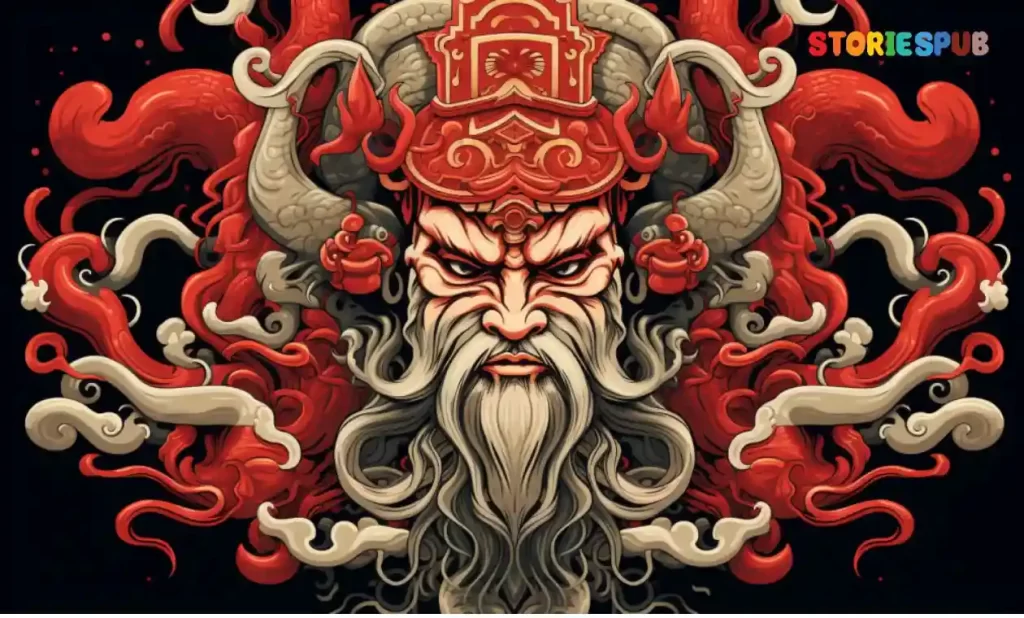
Erlang Shen, also known as Yang Jian or Li Erlang, is a fascinating and enigmatic figure in Chinese mythology. As the god of the hunt, martial arts, and magic, he has captivated the imaginations of generations with his unique powers and abilities. Often portrayed with a third eye on his forehead and accompanied by his loyal hunting dog, Erlang Shen is a popular character in folklore, literature, and art.
Erlang Shen holds a significant place in Chinese mythology due to his various roles and connections with other deities and mythological figures. As a warrior god, he represents strength, courage, and protection, and is often invoked by those seeking victory or justice. Additionally, Erlang Shen’s stories and legends not only entertain but also impart moral lessons and cultural values, ensuring his enduring relevance in Chinese society. Through this blog, we will explore the many facets of Erlang Shen, delving into his history, mythology, and cultural impact.
Origin, Family Background, and History of Erlang Shen
The origin and family background of Erlang Shen are steeped in Chinese mythology, with various sources providing different accounts of his lineage and history. While the details may vary, the following narrative presents a general overview of his origins, family background, and early life.
Origin:
Erlang Shen’s origins can be traced back to the early days of Chinese civilization, with his story woven into the intricate tapestry of Chinese mythology. He is often regarded as a semi-historical figure, combining elements of real-life heroes and legendary gods. Some accounts link Erlang Shen to the Shang Dynasty, while others place him during the Zhou Dynasty. Regardless of the specific era, Erlang Shen’s origins are deeply rooted in the rich and complex history of ancient China.
Family Background:
Erlang Shen’s family background is a subject of debate, as various sources attribute different lineages to him. One popular account identifies Erlang Shen as the nephew of the Jade Emperor, the supreme deity in Chinese mythology. In this narrative, Erlang Shen’s father is said to be Li Bing, a mortal hero who served as a high-ranking official and a great engineer during the reign of the King of Shu. His mother is often described as a fairy or a goddess, which explains his divine powers and abilities.
Another account claims that Erlang Shen is the son of a powerful earth deity, while yet another suggests that he is the grandson of the legendary Yellow Emperor, one of the mythical Five Emperors of ancient China. Regardless of the precise details of his lineage, Erlang Shen is consistently portrayed as a divine being with both human and supernatural connections.
History:
The history of Erlang Shen is a blend of myths, legends, and historical accounts that highlight his various roles as a warrior, protector, and divine being. From a young age, Erlang Shen is said to have exhibited extraordinary abilities, such as strength, intelligence, and agility. Recognizing his potential, his divine relatives sent him to be trained by celestial masters, who honed his skills in martial arts, magic, and the art of the hunt.
Throughout his life, Erlang Shen engaged in numerous battles against demons, monsters, and other supernatural beings, earning a reputation as a formidable warrior and guardian of humanity. One of the most famous stories involving Erlang Shen is his epic battle with the Monkey King, Sun Wukong, during the latter’s rebellion against the heavens. In this tale, Erlang Shen’s martial arts prowess, magical powers, and keen intellect are on full display, as he ultimately defeats Sun Wukong and restores order to the celestial realm.
The origin, family background, and history of Erlang Shen are a fascinating mix of mythology, history, and legend. His semi-divine lineage, remarkable abilities, and heroic deeds contribute to his enduring appeal and significance in Chinese culture and folklore.
Erlang Shen, the God of Hunt, Martial Arts, and Magic
Erlang Shen, a prominent figure in Chinese mythology, is revered as the god of the hunt, martial arts, and magic. Each of these roles carries unique attributes and contributes to the captivating and multifaceted nature of Erlang Shen.
1. The God of Hunt:
As the god of the hunt, Erlang Shen is revered for his exceptional tracking abilities and mastery over capturing both ordinary and supernatural creatures. With his loyal hunting dog by his side, Erlang Shen embodies the essence of a skilled hunter, representing his unparalleled prowess in this realm. The hunting dog, known for its acute senses and the ability to see through disguises and illusions, serves as an indispensable companion to Erlang Shen, further enhancing his hunting capabilities.
In ancient Chinese culture, hunting was a vital skill for survival, providing communities with food and resources while also serving as a means of protection against potential threats. Erlang Shen’s expertise in hunting highlights his deep connection with nature and his role as both a provider and protector. As a deity revered for his hunting skills, Erlang Shen symbolizes the importance of maintaining balance and harmony between humans and the natural world, acknowledging that the two are inextricably linked.
Furthermore, Erlang Shen’s role as a hunter extends beyond the physical realm to encompass his responsibilities as a warrior deity. He is often called upon to hunt down supernatural creatures, demons, and other malevolent beings that threaten the mortal world. His exceptional hunting skills enable him to locate and confront these enemies, ensuring the safety and well-being of humanity.
Erlang Shen’s relationship with his loyal hunting dog also serves as a reminder of the importance of companionship and cooperation in overcoming challenges. Their unwavering partnership exemplifies the power of unity and the significance of forming strong bonds with both humans and animals.
In conclusion, as the god of the hunt, Erlang Shen’s expertise in tracking and capturing creatures, both ordinary and supernatural, highlights his connection to nature and his role as a provider and protector. His loyal hunting dog serves as a symbol of his prowess in this domain and emphasizes the importance of companionship, balance, and harmony between humans and the natural world in ancient Chinese culture.
2. The God of Martial Arts:
Erlang Shen, as the god of martial arts, is renowned for his exceptional martial arts skills, positioning him as a formidable warrior and guardian in Chinese mythology. His association with martial arts symbolizes attributes such as strength, discipline, and agility. He is often depicted expertly wielding a range of weapons, including swords, spears, and halberds, showcasing his mastery over various combat techniques.
Erlang Shen’s unparalleled martial arts skills have made him an inspiration for martial artists seeking to enhance their abilities or secure victory in battle. They often invoke his name and guidance to channel his strength, precision, and tenacity in their practice. As a divine embodiment of martial arts, Erlang Shen serves as a role model for those who follow this path, exemplifying the virtues of dedication, perseverance, and skill.
In addition to his martial arts prowess, Erlang Shen’s connection to this discipline also links him to the teachings of balance, harmony, and self-control, which are integral values in Chinese philosophy and culture. Martial arts, as both a physical and spiritual practice, emphasize the importance of cultivating these qualities to achieve inner peace and personal growth. Erlang Shen’s representation as the god of martial arts underscores his role as a guardian of these values, guiding practitioners to develop their character and live in harmony with themselves and the world around them.
Overall, Erlang Shen’s exceptional martial arts skills and his association with this discipline highlight his role as a symbol of strength, discipline, and agility in Chinese mythology. His connection to martial arts also ties him to the teachings of balance, harmony, and self-control, emphasizing the importance of these values in Chinese philosophy and culture. Through his representation as the god of martial arts, Erlang Shen inspires martial artists and serves as a guiding force for those seeking personal growth and inner harmony.
3. The God of Magic:
Erlang Shen’s magical abilities play a significant role in establishing his status as a powerful and revered figure in Chinese mythology. As the god of magic, he is attributed with a diverse array of supernatural powers, including shapeshifting, teleportation, and control over the elements. These powers not only set him apart from other deities but also enhance his capacity to protect humanity and maintain the natural order.
His third eye, prominently displayed on his forehead, serves as a symbol of his divine insight and power. This mystical eye is believed to grant Erlang Shen the ability to discern the truth, penetrate illusions, and even control the minds of others. This unique capability further solidifies his position as a formidable force in the pantheon of Chinese mythology and enables him to confront challenges that other deities might find insurmountable.
Erlang Shen’s mastery of magic is also highlighted in his numerous encounters with supernatural beings, such as demons and spirits. As a protector of humanity and the natural order, he uses his magical prowess to restore balance and harmony when chaos threatens the world. In these tales, Erlang Shen often emerges victorious, showcasing his exceptional skills and unwavering determination to defend those in need.
In essence, Erlang Shen’s magical abilities contribute significantly to his mystique and allure, reinforcing his status as a powerful deity in Chinese mythology. As the god of magic, he wields a wide range of supernatural powers that enable him to confront supernatural beings and protect humanity from various threats. His third eye serves as a symbol of divine insight and power, further distinguishing him from other deities. Through his role as a bridge between the mortal realm and the divine, Erlang Shen continually strives to maintain balance and harmony in the face of chaos and adversity.
Erlang Shen’s multifaceted identity as the god of the hunt, martial arts, and magic embodies key aspects of Chinese culture and mythology. His numerous skills and abilities make him a powerful and enigmatic figure, capturing the imagination of generations and continuing to hold a significant place in Chinese folklore, literature, and art.
Powers and Abilities of Erlang Shen
Erlang Shen is revered in Chinese mythology for his incredible powers and abilities, which encompass magical prowess, martial arts mastery, and a range of other unique skills. These extraordinary attributes contribute to his reputation as a formidable warrior, guardian, and divine being.
A. Magical Prowess:
Erlang Shen’s magical abilities are an integral aspect of his identity, setting him apart from other figures in Chinese mythology. Some of his most notable magical powers include:
1. Shapeshifting: Erlang Shen is known for his ability to transform into various creatures and objects, allowing him to adapt to different situations and deceive his enemies.
2. Teleportation: He possesses the power to instantly transport himself and others across vast distances, enabling him to reach remote locations and evade danger.
3. Elemental control: Erlang Shen can manipulate the elements, such as summoning storms, controlling fire, or even causing earthquakes.
4. Healing: As a divine being, Erlang Shen has the ability to heal injuries and illnesses, both in himself and others.
5. Divine insight: His third eye, located on his forehead, grants him extraordinary perception and knowledge, allowing him to see through illusions, detect hidden enemies, and understand complex situations.
B. Martial Arts Mastery:
As the god of martial arts, Erlang Shen is renowned for his exceptional combat skills and expertise in a wide range of weapons. His mastery of martial arts includes:
1. Unparalleled hand-to-hand combat: Erlang Shen is a master of various martial arts styles, making him a formidable opponent in close-quarters combat.
2. Weapon expertise: He is adept at using numerous weapons, such as swords, spears, halberds, and bows, with deadly precision and efficiency.
3. Tactical acumen: Erlang Shen is known for his strategic and tactical prowess, enabling him to outmaneuver and outthink his opponents in battle.
4. Physical strength and agility: His divine heritage grants him superhuman strength, speed, and endurance, allowing him to perform incredible feats and overcome seemingly insurmountable challenges.
C. Other Unique Abilities:
In addition to his magical prowess and martial arts mastery, Erlang Shen possesses several other unique abilities that further enhance his reputation as a powerful and enigmatic figure in Chinese mythology:
1. Immortality: As a semi-divine being, Erlang Shen is immortal, allowing him to live for thousands of years without aging or succumbing to disease.
2. Command over celestial forces: Erlang Shen can summon and command various celestial beings, such as heavenly soldiers, to aid him in his battles against evil forces.
3. Animal communication: His close bond with his loyal hunting dog suggests that Erlang Shen has the ability to communicate with animals, enabling him to forge alliances with creatures from the natural world.
The powers and abilities of Erlang Shen are a testament to his incredible strength, skill, and divine heritage. His magical prowess, martial arts mastery, and other unique abilities make him a revered figure in Chinese mythology, embodying key aspects of Chinese culture and values.
The Story of How Erlang Shen Became a God
The ascension of Erlang Shen to godhood is a captivating tale that showcases his remarkable abilities, bravery, and divine lineage. Although there are different versions of the story, the following narrative provides a general overview of the events that led to Erlang Shen becoming a god in Chinese mythology.
Erlang Shen was born with exceptional talents and a strong connection to the divine, as a result of his semi-divine heritage. Recognizing his potential, his celestial relatives sent him to be trained by a series of renowned celestial masters, who honed his skills in martial arts, magic, and the art of the hunt. Over time, Erlang Shen became a powerful warrior and protector, renowned for his ability to defeat demons, monsters, and other supernatural beings.
One of the most famous battles involving Erlang Shen was his epic confrontation with the Monkey King, Sun Wukong. At the time, Sun Wukong had rebelled against the heavenly realm, causing great turmoil and chaos. The Jade Emperor, the supreme deity of Chinese mythology, sought a champion who could restore order and subdue the rebellious Monkey King.
Erlang Shen, with his formidable powers and abilities, was chosen for this task. He set out to confront Sun Wukong, engaging in a fierce and lengthy battle that tested the limits of both warriors. Utilizing his magical prowess, martial arts mastery, and keen intellect, Erlang Shen eventually outmaneuvered and defeated Sun Wukong, capturing him and bringing him before the Jade Emperor.
As a result of his victory, Erlang Shen’s reputation as a powerful and valiant warrior was solidified. In recognition of his achievements, the Jade Emperor granted him the title of “Erlang Shen,” which translates to “Divine Craftsman” or “Divine Artisan,” signifying his status as a divine being and protector of humanity. From that moment on, Erlang Shen was revered as a god, with his tales and exploits becoming an integral part of Chinese mythology.
The story of how Erlang Shen became a god is a testament to his incredible abilities, divine lineage, and unwavering dedication to protecting humanity and maintaining order. His ascension to godhood represents the culmination of his heroic deeds and the recognition of his divine status, solidifying his place as a revered figure in Chinese culture and mythology.
Legends and Stories Featuring Erlang Shen
Erlang Shen is a central figure in many legends and stories in Chinese mythology, showcasing his incredible abilities and his role as a protector of humanity. Some of the most popular myths involving Erlang Shen include:
1. The Battle with Sun Wukong:
The Battle with Sun Wukong is one of the most famous stories in Chinese mythology, featuring a thrilling confrontation between Erlang Shen and the legendary Monkey King, Sun Wukong. In this tale, Sun Wukong, a powerful and mischievous figure, rebels against the heavenly realm, causing great turmoil and chaos among the celestial beings.
As the chaos caused by Sun Wukong’s rebellion threatens the stability of both the heavenly realm and the mortal world, the Jade Emperor, the supreme ruler of the celestial hierarchy, searches for a champion who can restore order and subdue the unruly Monkey King. Erlang Shen, a warrior deity known for his formidable powers and abilities, is chosen for this daunting task, setting the stage for an epic confrontation between two of the most powerful figures in Chinese mythology.
The battle between Erlang Shen and Sun Wukong is a spectacular showcase of their martial arts mastery, magical prowess, and shapeshifting abilities. The two combatants engage in a series of intense clashes, each attempting to outmaneuver and outwit the other. Throughout the battle, they employ a wide array of techniques, transforming into various forms and summoning their respective divine powers to gain an advantage over their opponent.
As the struggle between Erlang Shen and Sun Wukong continues, it becomes apparent that they are evenly matched, with neither able to gain a decisive upper hand. However, Erlang Shen’s unwavering determination and resourcefulness ultimately prove to be the deciding factors in the battle. Through a combination of cunning strategies and a display of his exceptional abilities, Erlang Shen manages to outmaneuver and defeat Sun Wukong.
With Sun Wukong captured and subdued, Erlang Shen successfully restores order to the celestial realm, ending the chaos and turmoil that had plagued both the heavens and the mortal world. The tale of the Battle with Sun Wukong is a testament to Erlang Shen’s incredible powers, martial arts expertise, and unwavering dedication to maintaining order and harmony in the universe. This story not only highlights the extraordinary abilities of Erlang Shen but also serves as a captivating and enduring tale of epic confrontations between legendary figures in Chinese mythology.
2. The Subjugation of the Nine-Tailed Fox Demon:
The legend of the Subjugation of the Nine-Tailed Fox Demon is a popular tale in Chinese mythology that showcases Erlang Shen’s incredible abilities, determination, and unwavering commitment to protecting humanity. In this story, a cunning and powerful nine-tailed fox demon wreaks havoc in the mortal realm, causing chaos, destruction, and despair among the people.
As the turmoil and devastation caused by the fox demon grow, Erlang Shen decides to take action and put an end to the creature’s malevolent deeds. Using his formidable magical abilities, he embarks on a quest to track down the elusive demon, following a trail of chaos and destruction left in its wake.
The nine-tailed fox demon is no ordinary adversary; it possesses the ability to create powerful illusions and shapeshift into various forms, making it a formidable opponent for even the most skilled warriors. However, Erlang Shen is not deterred by the demon’s supernatural abilities, as his own unique powers and divine heritage equip him with the necessary tools to confront and defeat the creature.
One of Erlang Shen’s most distinctive abilities is his third eye, which grants him extraordinary perception and insight, enabling him to see through illusions and deceptions. As he engages the fox demon in a fierce battle, the creature attempts to use its powers to create various illusions, hoping to confuse and outmaneuver Erlang Shen. However, thanks to his third eye, Erlang Shen is able to see through these deceptions and maintain the upper hand in the battle.
The intense confrontation between Erlang Shen and the nine-tailed fox demon showcases the full extent of their powers, with both combatants employing their magical prowess and martial arts skills in an epic struggle. Ultimately, Erlang Shen’s abilities and determination prove superior, as he defeats and subdues the malevolent creature, putting an end to its reign of chaos and destruction in the mortal realm.
The legend of the Subjugation of the Nine-Tailed Fox Demon is a testament to Erlang Shen’s unwavering commitment to protecting humanity and maintaining order. Through his battle with the cunning and powerful fox demon, Erlang Shen demonstrates his incredible abilities, divine heritage, and relentless determination to confront and defeat the forces of evil in Chinese mythology.
3. The Rescue of the Jade Maiden:
The tale of the Rescue of the Jade Maiden is a captivating story in Chinese mythology that showcases Erlang Shen’s heroism, magical prowess, martial arts skills, and resourcefulness. In this narrative, a beautiful Jade Maiden is kidnapped by a powerful demon and taken to a remote mountain fortress as a prisoner. When word of her plight reaches Erlang Shen, he takes it upon himself to rescue her, embarking on a perilous journey filled with danger and adventure.
As Erlang Shen sets out on his quest, he encounters numerous obstacles and challenges that test his abilities to their limits. Along the way, he confronts various supernatural beings, such as ferocious monsters, cunning spirits, and other demonic entities. These confrontations provide an opportunity for Erlang Shen to demonstrate his exceptional magical prowess, as he employs spells, enchantments, and other mystical techniques to overcome his adversaries.
In addition to his magical abilities, Erlang Shen also showcases his martial arts skills throughout his journey. With his expertise in hand-to-hand combat and a wide range of weapons, he manages to defeat the supernatural creatures that stand in his way. His resourcefulness and strategic thinking also play a crucial role in his success, as he devises clever solutions to bypass traps and outwit his enemies.
Upon finally reaching the mountain fortress where the Jade Maiden is held captive, Erlang Shen faces his greatest challenge yet: the powerful demon responsible for her kidnapping. In a fierce battle that pushes both combatants to their limits, Erlang Shen ultimately triumphs over the demon, using his magical powers, martial arts skills, and indomitable spirit to secure the victory.
With the demon defeated, Erlang Shen frees the Jade Maiden from her captivity and escorts her safely back to her family, reuniting them and bringing an end to her ordeal. The tale of the Rescue of the Jade Maiden serves as a testament to Erlang Shen’s heroism, bravery, and unwavering commitment to protecting the innocent and maintaining order, further solidifying his status as a revered figure in Chinese mythology.
The story of the Rescue of the Jade Maiden showcases Erlang Shen’s incredible abilities, resourcefulness, and dedication to justice. Through his efforts to save the kidnapped maiden from the clutches of a powerful demon, Erlang Shen demonstrates his role as a compassionate and formidable guardian in Chinese mythology.
4. The Taming of the Floods:
The story of the Taming of the Floods is a captivating tale in Chinese mythology that highlights Erlang Shen’s connection to the mortal realm and his role as a protector of humanity. In this version of his origin story, Erlang Shen is portrayed as the son of Li Bing, a mortal hero and engineer who played a pivotal role in controlling the floods that ravaged ancient China.
At the time, the people of China were suffering from devastating floods that destroyed crops, homes, and entire villages. In response to this crisis, the Emperor tasked Li Bing with finding a solution to control the flooding and protect the people. Recognizing his son’s exceptional talents and divine heritage, Li Bing enlisted Erlang Shen’s help in this monumental endeavor.
Under his father’s guidance, Erlang Shen learned the art of engineering, gaining a deep understanding of hydraulics, water management, and the construction of complex infrastructure. Together, they devised an ambitious plan to tame the floods by constructing a massive system of dikes, canals, and waterways. This system would channel the floodwaters into designated areas, preventing them from wreaking havoc on the surrounding lands and settlements.
With a combination of their engineering expertise, Erlang Shen’s supernatural abilities, and the tireless efforts of the people, the colossal project slowly took shape. As the network of dikes and canals expanded, the floodwaters were gradually brought under control, saving countless lives and restoring stability to the region.
The successful completion of the flood control project not only cemented Li Bing’s legacy as a great engineer and hero but also demonstrated Erlang Shen’s dedication to protecting humanity and his connection to the mortal realm. By using his divine powers to address the challenges faced by the people, Erlang Shen proved himself to be a compassionate and devoted guardian, further solidifying his status as a revered figure in Chinese mythology.
These popular myths featuring Erlang Shen underscore his unique abilities, divine heritage, and unwavering dedication to protecting humanity and maintaining order. As a central figure in Chinese mythology, Erlang Shen continues to captivate audiences with his heroic deeds and extraordinary powers.
The Story Behind the Third Eye:
Erlang Shen, a prominent figure in Chinese mythology, is often depicted with a third eye on his forehead, which grants him extraordinary perception, insight, and divine powers. The story behind Erlang Shen’s third eye varies among different versions of his mythology, but a common theme is that it represents his divine heritage and his unique connection to both the celestial and mortal realms.
In one version of Erlang Shen’s origin story, he is said to be the nephew of the Jade Emperor, the supreme ruler of the celestial hierarchy in Chinese mythology. As a divine being and a member of the celestial family, Erlang Shen was born with a third eye that signified his divine origin and granted him supernatural abilities. This third eye allowed him to see beyond the physical realm, pierce through illusions, and perceive the true nature of things. As a result, it became an essential tool in his role as a warrior deity and protector of humanity.
Another version of the story suggests that Erlang Shen acquired his third eye through intense meditation and the cultivation of his spiritual powers. In this narrative, Erlang Shen is portrayed as a diligent and devoted practitioner of Taoist and Buddhist teachings, who sought to attain enlightenment and transcend the limitations of the mortal world. Through his spiritual practice, he was able to unlock his third eye, which granted him unparalleled perception and mastery over the forces of nature.
Regardless of the specific origin story, Erlang Shen’s third eye is a symbol of his divine heritage, extraordinary abilities, and his unique role in Chinese mythology. As a deity who straddles the boundary between the celestial and mortal realms, Erlang Shen’s third eye enables him to perceive the unseen and protect humanity from various threats, both natural and supernatural. This distinctive feature has become one of the most iconic and enduring aspects of his character, reinforcing his status as a revered and powerful figure in Chinese mythology.
Symbols Associated with Erlang Shen:
Erlang Shen, a revered figure in Chinese mythology, is often associated with several distinctive symbols that represent his divine heritage, unique abilities, and his role as a protector of humanity. These symbols not only contribute to his iconic image but also serve as reminders of the various aspects of his character and the powers he wields.
A. The third eye:
One of the most iconic symbols associated with Erlang Shen is the third eye on his forehead. This unique feature represents his divine heritage, extraordinary perception, and supernatural powers. The third eye allows Erlang Shen to see beyond the physical realm, pierce through illusions, and perceive the true nature of things. As a symbol of his divine origin and his connection to both the celestial and mortal realms, the third eye highlights Erlang Shen’s unique role in Chinese mythology as a warrior deity and protector of humanity.
B. The hunting dog:
Another significant symbol associated with Erlang Shen is his loyal hunting dog. The dog is often depicted by his side, symbolizing his role as a hunter and his close connection to the natural world. The hunting dog not only assists Erlang Shen in tracking down supernatural creatures and enemies but also represents his unwavering dedication to protecting the innocent and maintaining order in the universe. This loyal companion serves as a reminder of Erlang Shen’s connection to the mortal realm and his commitment to safeguarding humanity against various threats.
C. Other significant symbols:
In addition to the third eye and the hunting dog, there are other symbols associated with Erlang Shen that reflect his divine powers and abilities. Some of these symbols include:
1. His weapon: Erlang Shen is often depicted wielding a powerful weapon, such as a spear, a sword, or a halberd. This weapon symbolizes his martial arts mastery and his role as a warrior deity in Chinese mythology.
2. His armor: Erlang Shen is usually portrayed wearing a suit of armor, which signifies his divine status as well as his readiness to protect humanity and confront the forces of evil.
3. His celestial scarf: In some depictions, Erlang Shen is shown wearing a celestial scarf, a common accessory for divine beings in Chinese mythology. This scarf represents his connection to the heavenly realm and his status as a member of the celestial hierarchy.
In summary, the various symbols associated with Erlang Shen, such as the third eye, the hunting dog, and other significant icons, serve to illustrate his divine heritage, extraordinary abilities, and his role as a protector of humanity. These symbols contribute to his iconic image and reinforce his status as a revered and powerful figure in Chinese mythology.
The Loyal Hunting Dog of Erlang Shen:
The loyal hunting dog of Erlang Shen is an important and iconic symbol in Chinese mythology, highlighting the god’s connection to the natural world and his role as a protector of humanity. Often depicted by Erlang Shen’s side, the hunting dog serves as a faithful companion, aiding him in tracking down supernatural creatures and enemies while also showcasing his commitment to maintaining order in the universe.
In the legends and stories featuring Erlang Shen, the hunting dog plays a crucial role in assisting its master in various quests and battles. With its keen senses, agility, and loyalty, the dog helps Erlang Shen navigate through treacherous landscapes, locate hidden enemies, and confront malevolent beings that threaten the mortal realm. The bond between Erlang Shen and his hunting dog is strong, symbolizing the unbreakable partnership between the two and their shared dedication to protecting the innocent.
The hunting dog also represents Erlang Shen’s mastery of the natural world and his ability to harness its powers in his quest to maintain harmony and order. As a hunter and a warrior, Erlang Shen understands the importance of the connection between humans and nature, and his loyal hunting dog serves as a living embodiment of this connection. The dog’s presence in the myths and legends of Erlang Shen demonstrates the importance of balance and harmony between the mortal realm and the natural world in Chinese mythology.
The breed of the hunting dog is not explicitly mentioned in the legends, but it is often depicted as a strong and powerful canine with a keen sense of smell and exceptional tracking abilities. The dog’s intelligence, courage, and loyalty make it a formidable ally for Erlang Shen, helping him overcome numerous challenges and enemies throughout his adventures.
The loyal hunting dog of Erlang Shen is a significant symbol in Chinese mythology, representing the god’s connection to the natural world, his role as a protector of humanity, and the importance of the bond between humans and nature. The dog’s unwavering loyalty and dedication to its master serve as a reminder of Erlang Shen’s commitment to safeguarding the innocent and maintaining order in the universe.
The Many Names of Erlang Shen
Erlang Shen is a multifaceted deity in Chinese mythology, known by various names that reflect his different aspects and attributes. Two of the most common alternative names for Erlang Shen are Yang Jian and Li Erlang. Each name offers a unique perspective on his character and significance in Chinese culture.
A. Yang Jian:
The name Yang Jian is often associated with Erlang Shen’s origins as a historical figure. Yang Jian was a legendary general and hero during the early years of the Tang Dynasty. Known for his exceptional martial arts skills, bravery, and dedication, Yang Jian was later deified and transformed into the god Erlang Shen. By incorporating the heroic qualities of Yang Jian, the deity Erlang Shen embodies the virtues of strength, loyalty, and perseverance, qualities highly valued in Chinese culture. The name Yang Jian also connects Erlang Shen to the Tang Dynasty, a period of great cultural and political significance in Chinese history.
B. Li Erlang:
The name Li Erlang is another moniker for Erlang Shen, often associated with his role in controlling the floods in ancient China. In some legends, Erlang Shen is identified as the son of Li Bing, a mortal hero and engineer who was responsible for managing and taming the floods that plagued the land. As Li Erlang, he is depicted as a skilled engineer and protector of humanity, working alongside his father to construct a vast system of dikes and canals to control the floods. This name highlights Erlang Shen’s connection to the mortal realm, emphasizing his role in safeguarding people from natural disasters and maintaining balance in the natural world.
In summary, the many names of Erlang Shen, including Yang Jian and Li Erlang, offer different perspectives on his character and significance in Chinese mythology. As Yang Jian, he represents the virtues of strength, loyalty, and perseverance, while as Li Erlang, he emphasizes his role as a protector of humanity and maintainer of balance in the natural world. These different names and the associated legends demonstrate the multifaceted nature of Erlang Shen, showcasing his diverse roles and attributes within Chinese culture.
Connection to other deities and mythological figures
Erlang Shen, as a prominent figure in Chinese mythology, shares connections with various other deities and mythological figures. These connections highlight the intricate relationships and interactions among divine beings in Chinese mythology and further emphasize Erlang Shen’s significance and roles within this cultural context.
The Jade Emperor:
As a deity in Chinese mythology, Erlang Shen is subordinate to the Jade Emperor, the supreme ruler of the celestial realm. In some legends, the Jade Emperor tasks Erlang Shen with important missions, such as subduing the rebellious Monkey King, Sun Wukong. This connection underscores Erlang Shen’s role as a powerful and reliable guardian who enforces the Jade Emperor’s will and maintains order in the celestial realm.
Sun Wukong (The Monkey King):
Erlang Shen is most famously associated with Sun Wukong, the Monkey King, in the epic tale of their confrontation. Sun Wukong had rebelled against the heavenly realm, causing great chaos and turmoil. Erlang Shen, as a champion of the Jade Emperor, was entrusted with the responsibility of subduing the Monkey King and restoring order. Their battle serves as a showcase of their respective martial arts skills, magical prowess, and shapeshifting abilities. This connection highlights Erlang Shen’s role as a protector of the celestial realm and enforcer of divine order.
Nezha:
Erlang Shen shares a connection with Nezha, another popular deity in Chinese mythology known for his martial arts skills and youthful spirit. Both deities possess exceptional combat skills, making them powerful warriors in the celestial realm. They occasionally collaborate on various missions and battles, exemplifying camaraderie and cooperation among divine beings.
Guanyin (Goddess of Mercy):
In some legends, Erlang Shen is associated with Guanyin, the Goddess of Mercy, known for her compassion and kindness. In these stories, Guanyin might intervene on behalf of mortals, seeking Erlang Shen’s assistance in resolving conflicts or averting disasters. This connection reflects the compassionate aspect of Erlang Shen, showcasing his willingness to protect and aid those in need.
These connections to other deities and mythological figures illustrate the complex and intertwined nature of Chinese mythology. Erlang Shen’s relationships with these divine beings emphasize his various roles and attributes, such as his duty as a guardian, his prowess in martial arts and magic, and his compassion for humanity. By interacting with other deities and figures in Chinese mythology, Erlang Shen’s significance and influence within this cultural context are further underscored.
Erlang Shen in Art and Literature:
A. Depictions in Traditional Art:
As a prominent figure in Chinese mythology, Erlang Shen has been depicted in various forms of traditional art, such as paintings, sculptures, and murals. In these representations, he is often portrayed as a stern and powerful warrior, showcasing his martial prowess and divine authority. Some common visual elements in his depictions include:
– The Third Eye: Erlang Shen’s third eye is typically shown on his forehead, symbolizing his divine insight and ability to see the truth and pierce through illusions.
– Weapons: In many artistic depictions, Erlang Shen is shown wielding various weapons, such as swords, spears, or halberds, highlighting his exceptional martial arts skills and his role as a protector.
– Hunting Dog: Erlang Shen’s loyal hunting dog is often portrayed by his side, signifying his connection to the hunt and his mastery over tracking and capturing both ordinary and supernatural creatures.
– Traditional Clothing: He is often depicted wearing traditional Chinese armor or warrior attire, emphasizing his status as a divine guardian and his martial arts expertise.
B. Descriptions in Ancient Texts:
Erlang Shen is also mentioned in various ancient Chinese texts, including classical literature, historical records, and religious scriptures. These descriptions provide valuable insights into his character, powers, and roles within Chinese mythology. Some common themes and references in these texts include:
– His Connection to Li Bing: In some texts, Erlang Shen is described as the son of Li Bing, a mortal hero who played a crucial role in controlling the floods that plagued ancient China. This connection highlights Erlang Shen’s ties to the mortal realm and his role as a protector of humanity.
– Battles and Conquests: Erlang Shen’s martial arts skills and magical abilities are often detailed in ancient texts, recounting his numerous battles with demons, spirits, and other supernatural beings. These stories emphasize his role as a guardian and enforcer of order in the celestial realm.
– The Third Eye: Ancient texts also mention Erlang Shen’s third eye, elaborating on its divine powers and abilities, such as the capacity to see through illusions and discern the truth.
Erlang Shen’s presence in both traditional art and ancient texts reflects his importance and influence within Chinese mythology. Artistic depictions capture his strength, martial prowess, and divine authority, while descriptions in ancient texts provide a deeper understanding of his character, powers, and roles in the celestial realm. Through these various forms of expression, the enduring legacy of Erlang Shen in Chinese culture is further solidified.
Worshiping Erlang Shen: Rituals and Practices
A. Traditional rituals associated with Erlang Shen:
Erlang Shen, as a revered deity in Chinese mythology, has been worshiped by devotees for centuries. His roles as a protector, god of the hunt, martial arts, and magic have made him a popular figure among those seeking divine assistance or blessings. Here are some traditional rituals and practices associated with the worship of Erlang Shen:
1. Offerings:
Devotees often present offerings to Erlang Shen in the form of food, incense, and other symbolic items to show their respect and gratitude. These offerings may be made at temples dedicated to Erlang Shen or at home altars, where his image or statue is placed.
2. Prayers and Chants:
Worshipers may recite specific prayers or chants when seeking Erlang Shen’s blessings or guidance. These prayers often focus on asking for protection, success in hunting or martial arts endeavors, or the ability to overcome obstacles.
3. Festivals and Celebrations:
Certain festivals and celebrations may be held in honor of Erlang Shen, during which devotees gather to pay homage and participate in various religious and cultural activities. These events can include performances of traditional dances, music, and theatrical reenactments of legends involving Erlang Shen.
4. Martial Arts Practices:
As the god of martial arts, Erlang Shen is often invoked by martial artists seeking to improve their skills or gain victory in combat. Some practitioners may dedicate their training sessions or competitions to Erlang Shen, offering prayers or engaging in rituals to invoke his strength, discipline, and agility.
5. Amulets and Talismans:
Devotees may wear or carry amulets and talismans featuring Erlang Shen’s image or symbols as a form of protection and to maintain a connection with the deity. These items are believed to bring the bearer good fortune, strength, and divine guidance.
These traditional rituals and practices associated with the worship of Erlang Shen reflect the deity’s importance and influence in Chinese culture. Through these various forms of devotion, the followers of Erlang Shen seek to connect with his divine powers and attributes, further strengthening the bond between the mortal realm and the celestial world.
Temples Dedicated to Erlang Shen:
While there are numerous temples dedicated to various deities across China, several prominent ones are dedicated to Erlang Shen, reflecting his importance in Chinese mythology and culture. Here are some of the most famous temples dedicated to Erlang Shen in China:
1. Erlang Shen Temple in Sichuan Province:
Located in the Sichuan Province, this temple is a significant site of worship for Erlang Shen. It is believed to be the place where Erlang Shen assisted his father, Li Bing, in controlling the floods that plagued ancient China. The temple features impressive architecture, intricate carvings, and statues of Erlang Shen, his hunting dog, and other related figures.
2. Shijiazhuang Erlang Shen Temple in Hebei Province:
This temple is situated in Shijiazhuang, Hebei Province, and is another popular destination for devotees of Erlang Shen. The temple complex includes a grand hall where the statue of Erlang Shen is enshrined, along with various other halls dedicated to different deities.
3. Erlang Shen Temple in Chongqing:
Located in Chongqing, this temple dedicated to Erlang Shen is known for its beautiful surroundings and serene atmosphere. It houses a large statue of Erlang Shen and provides a peaceful place for devotees to worship and reflect.
4. Yuzhong Erlang Shen Temple in Gansu Province:
This ancient temple is situated in Yuzhong County, Gansu Province, and is well-known for its historic significance and stunning architecture. The temple is dedicated to Erlang Shen and his role as a protector and god of martial arts, making it a popular destination for martial artists and other devotees.
These famous temples dedicated to Erlang Shen in China serve as places of worship, spiritual connection, and cultural heritage. They provide an opportunity for devotees to pay homage to Erlang Shen and seek his blessings, while also preserving the rich history and traditions associated with this revered deity.
Erlang Shen in Modern Popular Culture:
Erlang Shen’s popularity in Chinese mythology has carried over into modern popular culture, with the character being adapted and featured in various movies, TV shows, and literature. Here are some notable examples of Erlang Shen’s appearances in modern popular culture:
1. Movies:
Erlang Shen has been portrayed in several Chinese fantasy films, often as a central character or a key supporting figure. One example is the 2016 movie “League of Gods,” in which Erlang Shen, played by actor Xiaoming Huang, is depicted as a heroic warrior fighting against a malevolent force threatening the world.
2. TV Shows:
Television adaptations of classic Chinese mythology often include Erlang Shen as an essential character. One such example is the TV series “The Investiture of the Gods” (also known as “Fengshen Bang”), which features the story of Erlang Shen and other mythological figures. Another TV show, “Madam White Snake,” includes a subplot involving Erlang Shen and his confrontation with the titular character.
3. Literature:
Erlang Shen has appeared in various literary works, both traditional and contemporary. One of the most famous classical Chinese novels, “Journey to the West,” features a memorable encounter between Erlang Shen and Sun Wukong, the Monkey King. In modern literature, Erlang Shen has been reimagined in various ways, from graphic novels to fantasy novels, which explore different aspects of his character and abilities.
4. Video Games:
Erlang Shen has also made his way into the world of video games, where he is often depicted as a powerful warrior with supernatural abilities. One example is the popular multiplayer online battle arena game “Smite,” which includes Erlang Shen as a playable character.
These adaptations of Erlang Shen in modern popular culture demonstrate the enduring appeal of this mythological figure. By adapting the character for contemporary audiences, these movies, TV shows, and literary works help to preserve and celebrate the rich heritage of Chinese mythology while also introducing Erlang Shen to new generations of fans.
Conclusion:
Erlang Shen is a fascinating and complex character in Chinese mythology, revered as the god of the hunt, martial arts, and magic. His many stories and legends showcase his abilities as a warrior, protector, and bridge between the mortal realm and the divine. As a symbol of strength, discipline, and agility, he has become an important cultural icon in China and continues to inspire and captivate audiences around the world.
Lesson:
The stories and legends surrounding Erlang Shen offer valuable lessons about the importance of balance, harmony, and self-control. Erlang Shen’s mastery of martial arts and magic demonstrate the value of discipline and dedication, while his role as a protector highlights the importance of caring for and defending others. Furthermore, his connection to nature and the hunt serves as a reminder of the interdependence between humanity and the natural world. Through the character of Erlang Shen, Chinese mythology offers a rich tapestry of values, teachings, and stories that continue to resonate with people of all backgrounds and cultures.
Hey kids, how much did you like Erlang Shen: The Enigmatic Deity of Chinese Mythology? Please share your view in the comment box. Also, please share this story with your friends on social media so they can also enjoy it, and for more such Chinese Mythology, please bookmark storiespub.com.
Related Post :
FAQ about Erlang Shen
Who is Erlang Shen?
Erlang Shen is a god of the hunt, martial arts, and magic in Chinese mythology.
What is the significance of Erlang Shen in Chinese mythology?
Erlang Shen is an important figure in Chinese mythology and culture, representing strength, discipline, and protection.
What is the story behind Erlang Shen's third eye?
Erlang Shen's third eye is said to grant him the ability to see the truth, pierce through illusions, and even control the minds of others.
What are the powers and abilities of Erlang Shen?
Erlang Shen is said to possess a wide range of supernatural powers, such as shapeshifting, teleportation, and control over the elements, in addition to his martial arts skills and hunting prowess.
How is Erlang Shen associated with martial arts?
As the god of martial arts, Erlang Shen symbolizes strength, discipline, and agility, and is often depicted wielding a variety of weapons, such as swords, spears, and halberds.
What is the role of Erlang Shen's hunting dog?
Erlang Shen's loyal hunting dog is a symbol of his prowess in tracking and capturing both ordinary and supernatural creatures.
Are there any famous temples dedicated to Erlang Shen?
Yes, there are several famous temples dedicated to Erlang Shen in China, including the Erlang Shen Temple in Sichuan Province and the Shijiazhuang Erlang Shen Temple in Hebei Province.
How did Erlang Shen become a god in Chinese mythology?
According to legend, Erlang Shen became a god after demonstrating his exceptional abilities and service to humanity and the heavens.
How has the character of Erlang Shen been adapted in modern popular culture?
Erlang Shen has been portrayed in movies, TV shows, literature, and video games, often as a heroic figure with supernatural abilities.
What lessons can be learned from the stories and legends of Erlang Shen?
The stories and legends of Erlang Shen offer valuable lessons about the importance of balance, harmony, and self-control, as well as the interconnectedness between humanity and the natural world.


